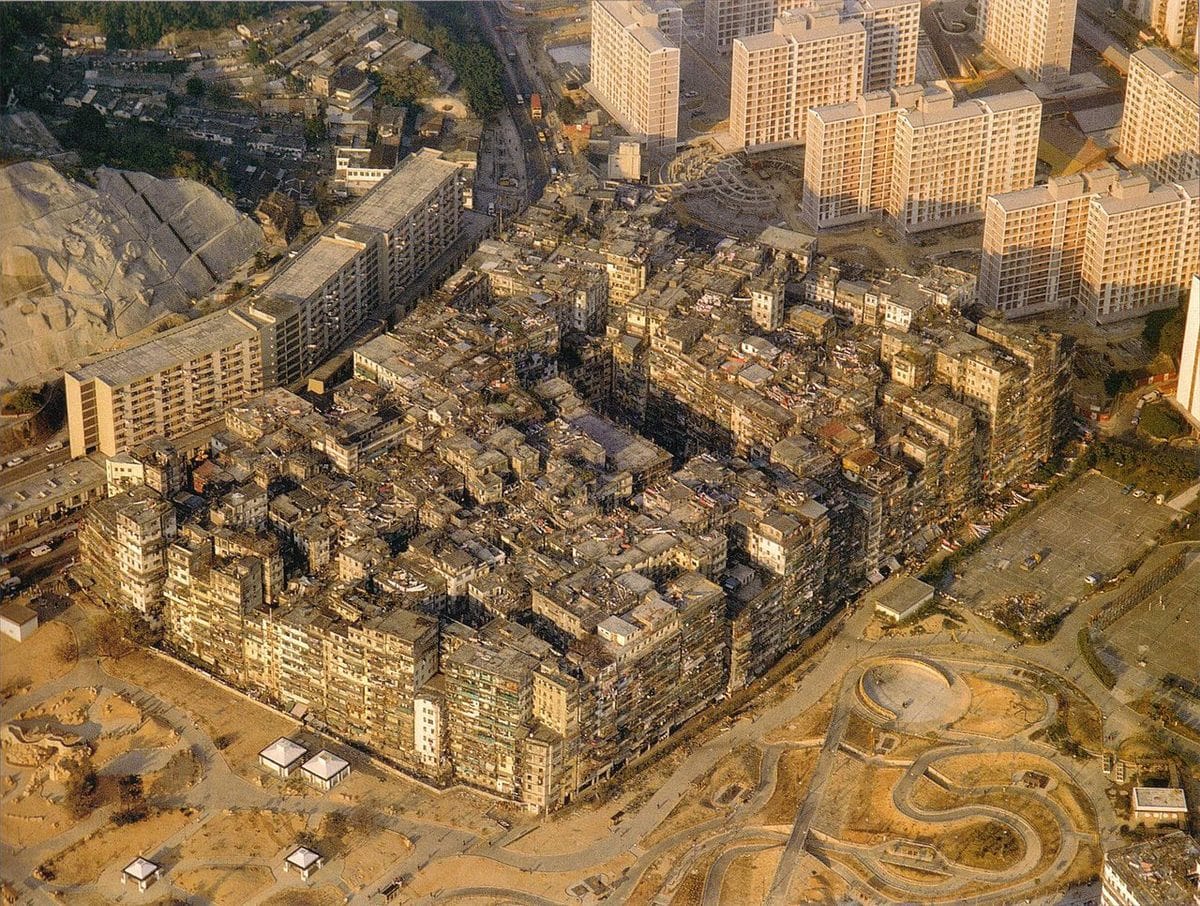Friday, July 12, 2024

Welcome back to Wolmania, where we take no position on Democratic Party politics other than "yikes... none of this seems good". Shall we talk about something else?
Item 1: a link

AT ITS PEAK, KOWLOON HAD a population density of 3,300,000 people per square mile. Occupying every inch of hundreds of mid-rise buildings, Kowloon was such a lawless maze of alleyways and secret staircases, that police from the outside world would rarely venture in without a sizable group. There were two main alleys on the ground as well, but they did not get any natural light, instead the city had neon lights that were working 24 hours a day.
When it was first built, Kowloon was a military base with walls 13 feet high and 15 feet thick. During the 19th and early 20th century, it traded hands a number of times until after World War II when the Chinese made an attempt to reclaim their rights to the city. Before they could get control, an influx of immigrants occupied Kowloon, making its regulation and governance impossible by the Chinese authorities, as well as the British administration in Hong Kong.
Over the next 50 years, Kowloon grew at an enormous rate, swelling the 6.5 acre site to an overpopulated box of anarchy. As more immigrants moved into the city, ten-storey buildings were erected across most of the city, effectively blocking out the sunlight in the alleyways below. Kowloon was so dense and so tightly packed with buildings that one could go across the city North to South on a series of interconnected stairways and paths without touching the ground. (Atlas Obscura)
Almost as intricate, extensive, and vertiginous as Hong Kong's Kowloon Walled City itself is this annotated widescreen cross-section illustration by Terasawa Hitomi, in the book Daizukan Kyuryujyou (readers who aren't fluent in Japanese will not find that link very useful). I included a small section below, but I encourage you to click through and explore a bit. It's hard to really comprehend the enormity or complexity of this place, or what it must have been like to live there.

Here's a link to a more thorough history of the Kowloon Walled City, also from Atlas Obscura but from a different page.
Item 2: a list
Actual American Colonies, ranked:
- Pennsylvania
- Massachusetts
- New York
- Delaware
- Connecticut
- New Jersey
- New Hampshire
- Rhode Island
- Maryland
- Virginia
- North Carolina
- Georgia
- South Carolina
Item 3: a media recommendation
Linda Ronstadt - Many Rivers to Cross
Item 4: word of the week
Syncretism
It was a nice idea to fuse all the world's views into a syncretic theory of what constitutes a "sandwich". Unfortunately it quickly became obvious that a lot of people have some really dumb ideas.
Item 5: a photograph

See ya!
Thank you for reading. I'll be back next week with more stuff.
Member discussion